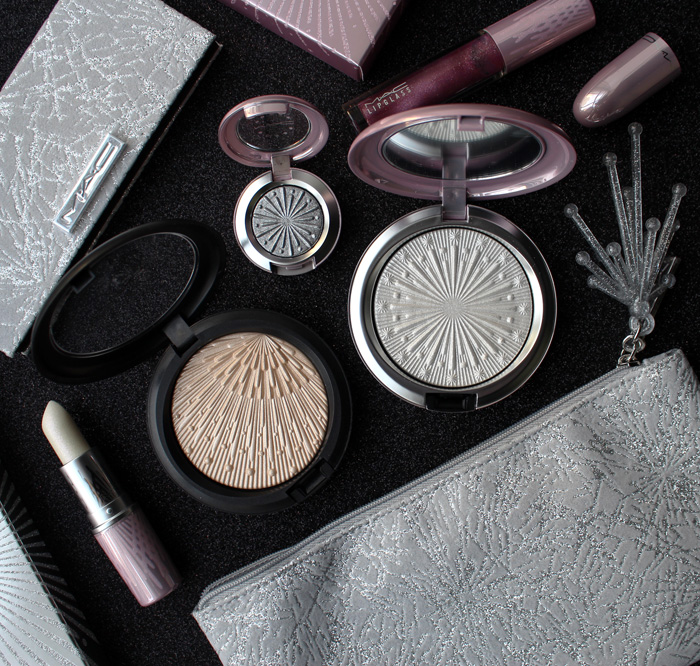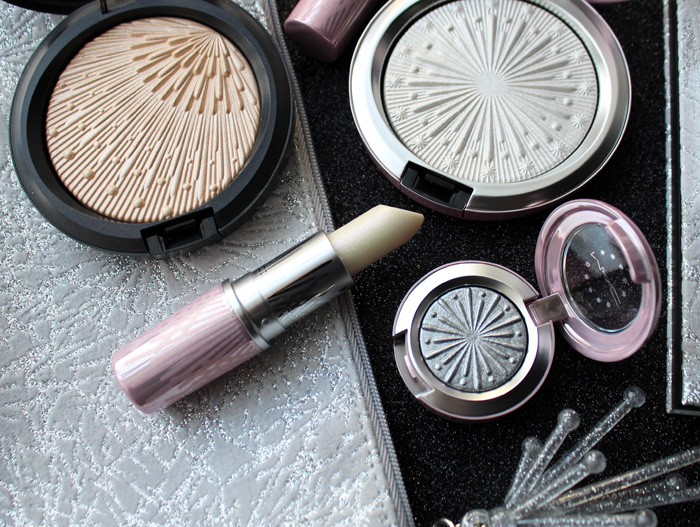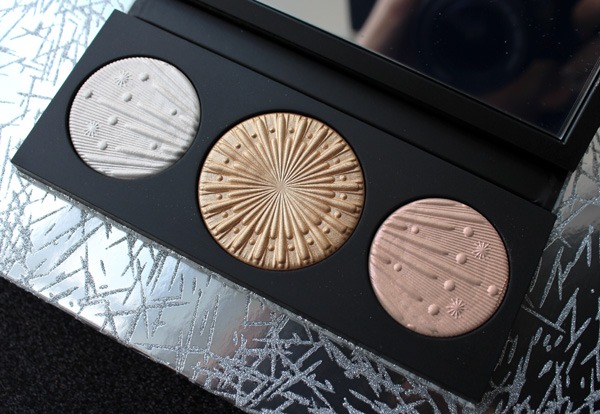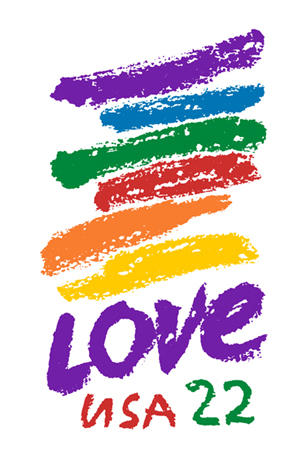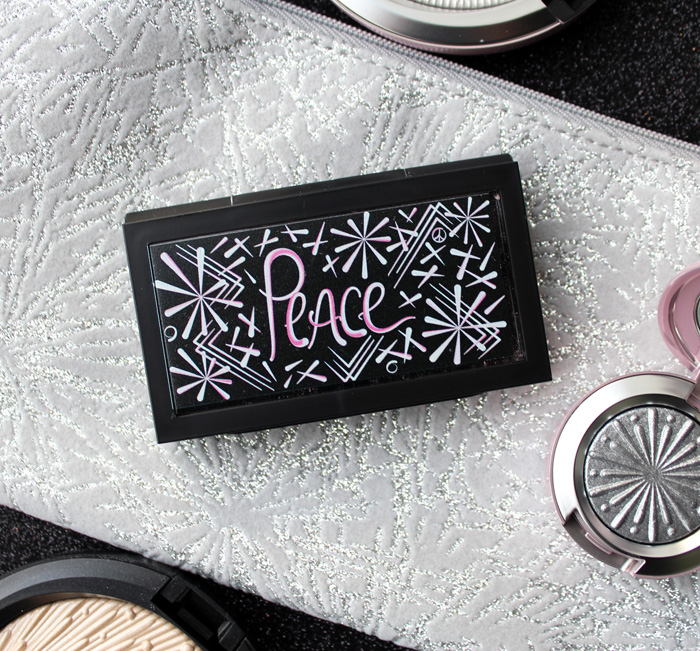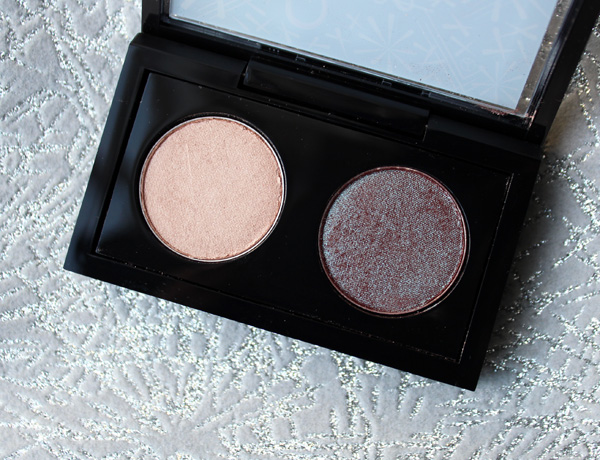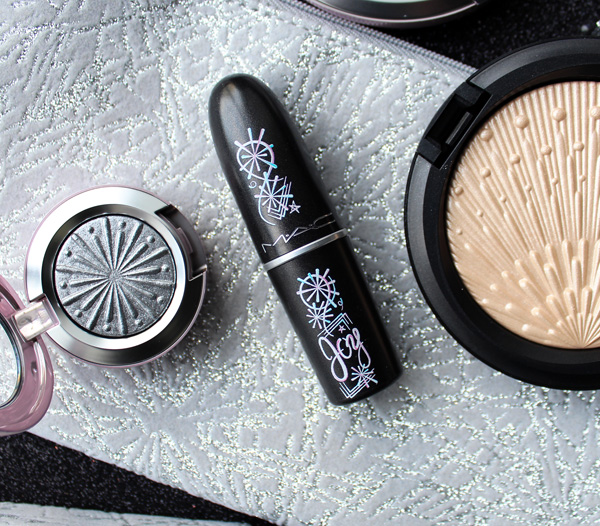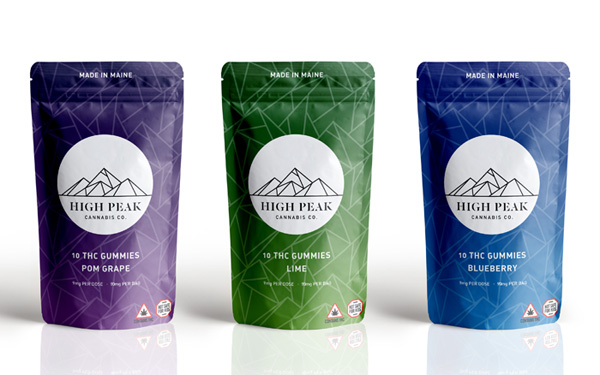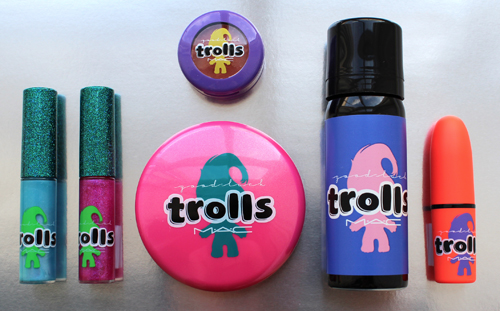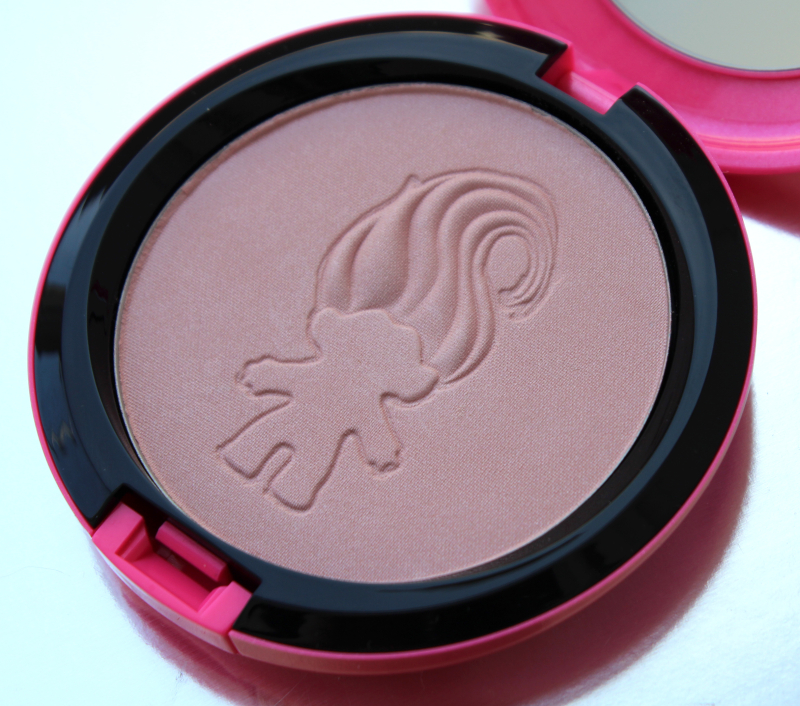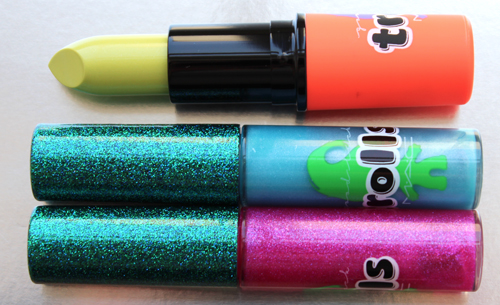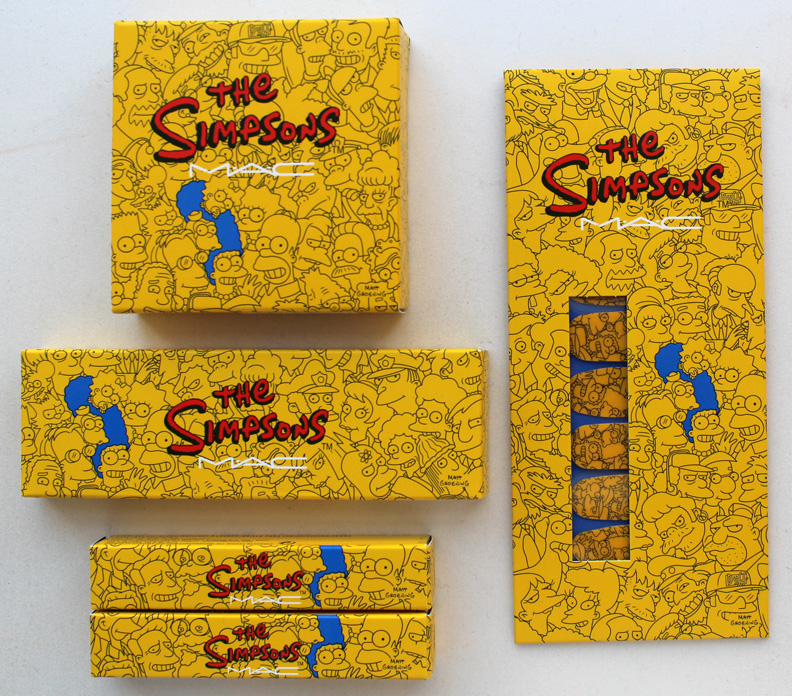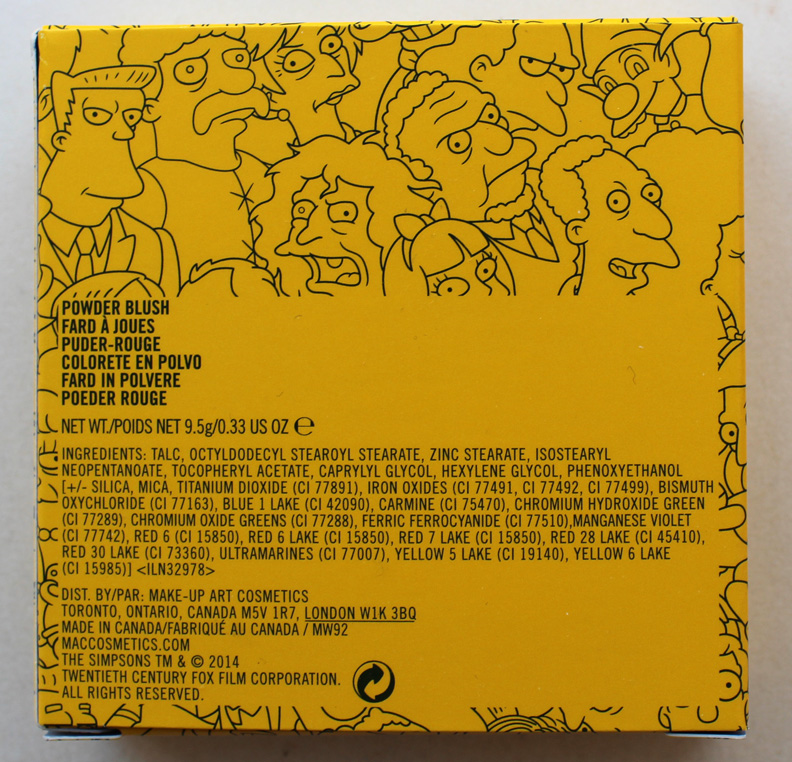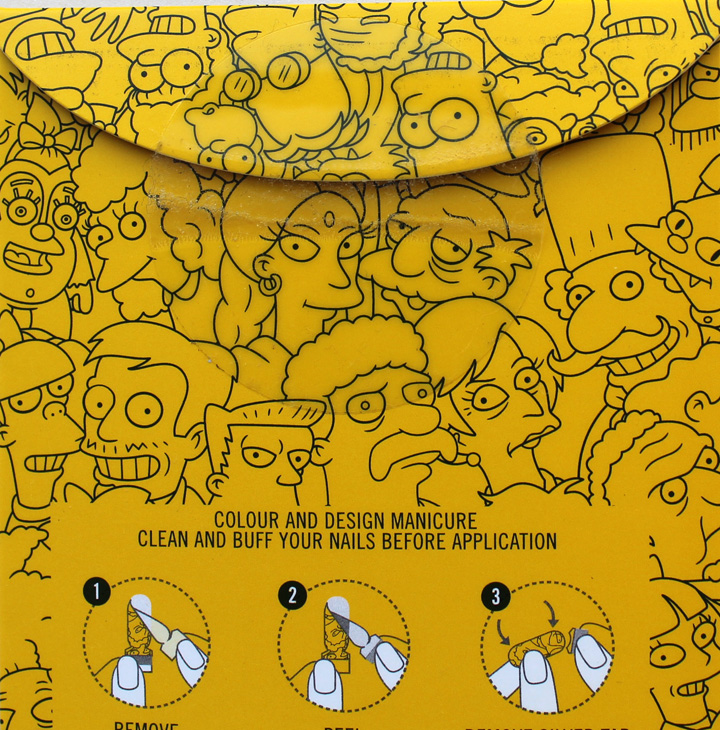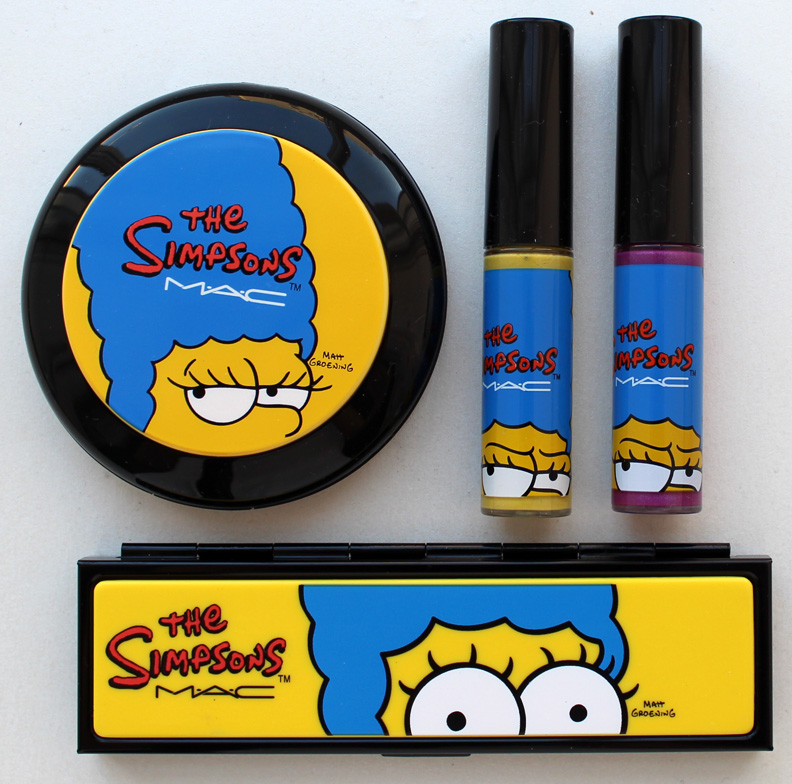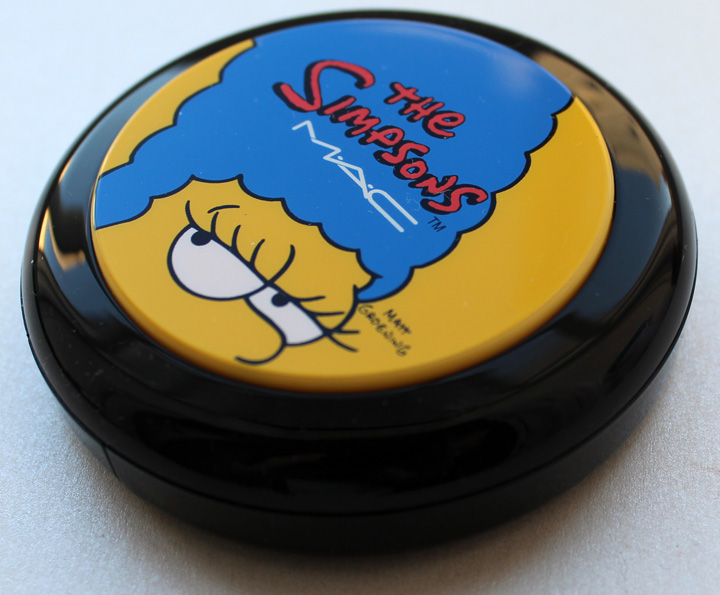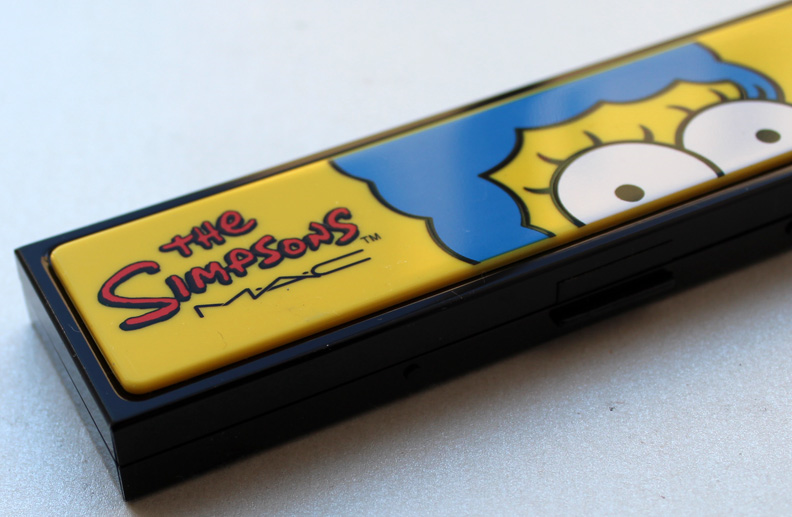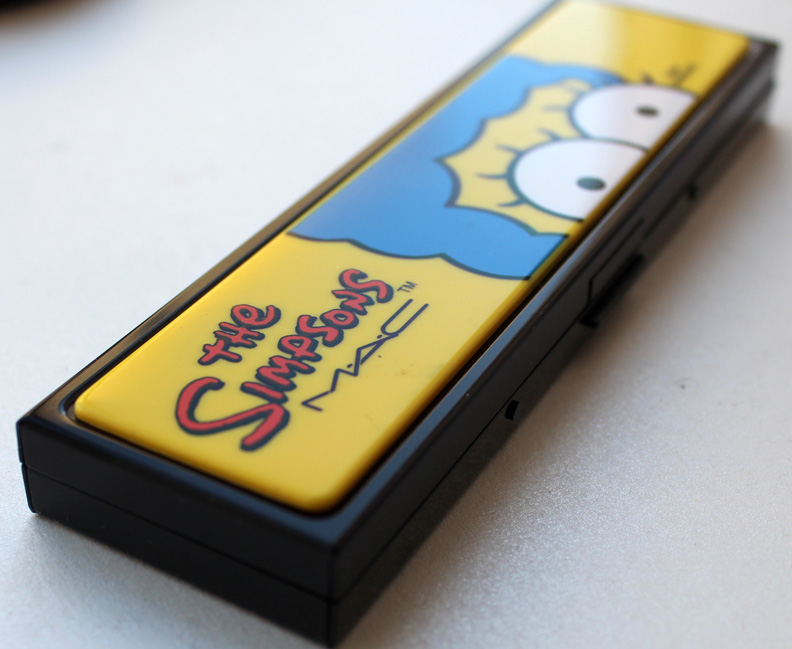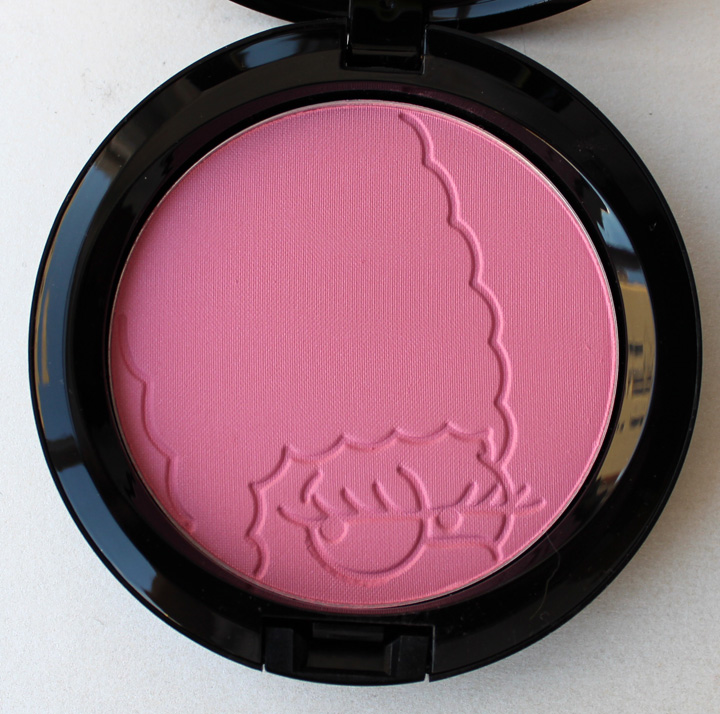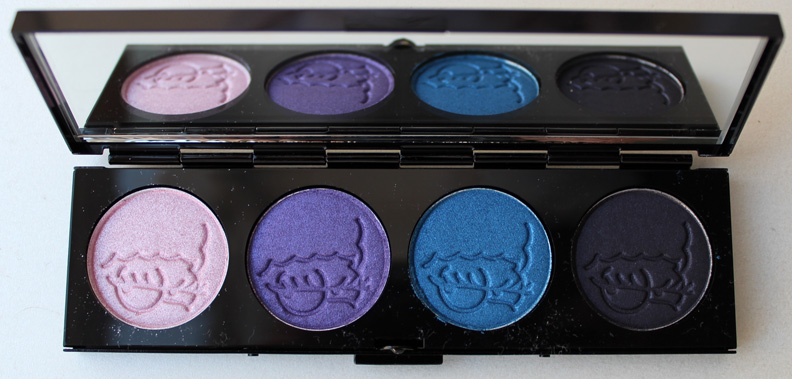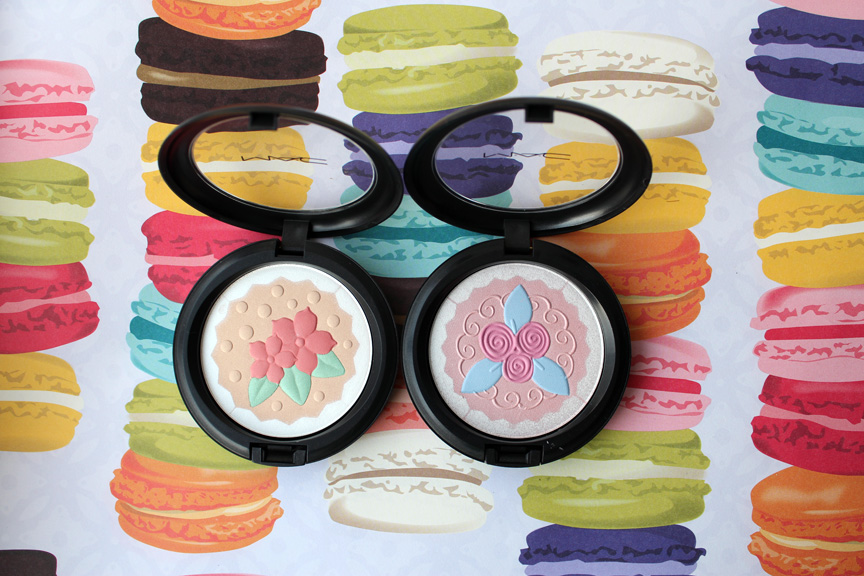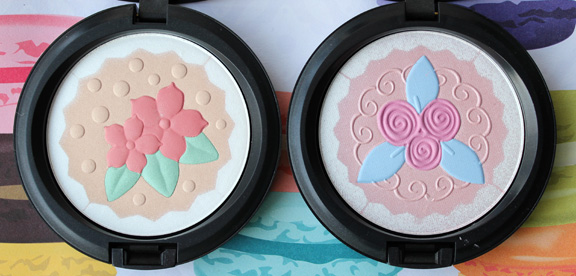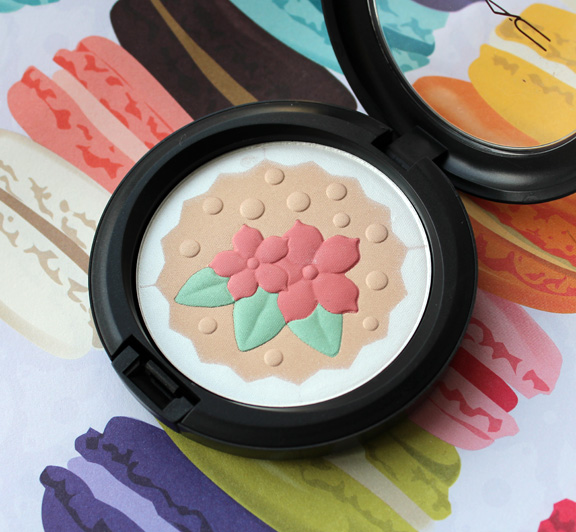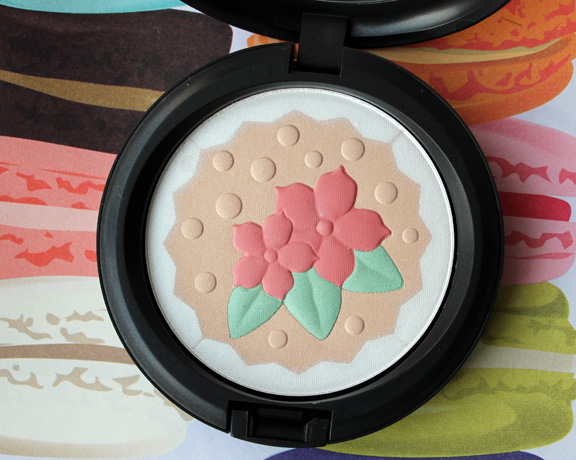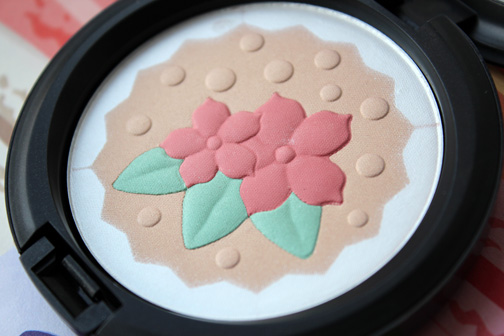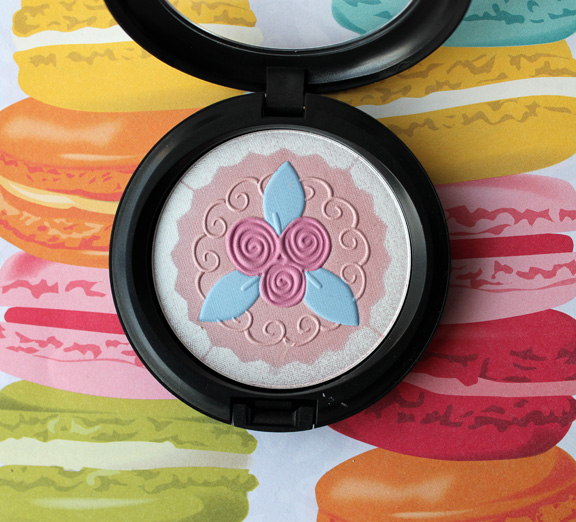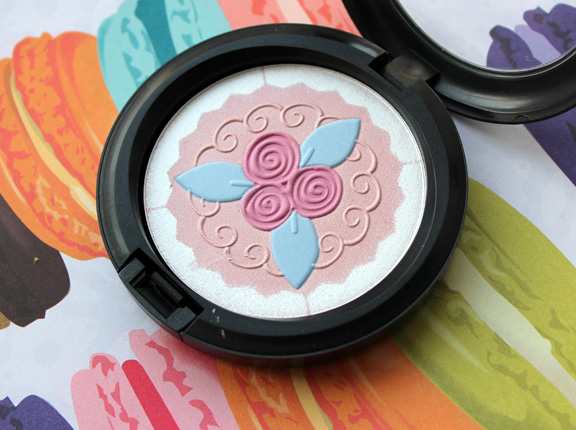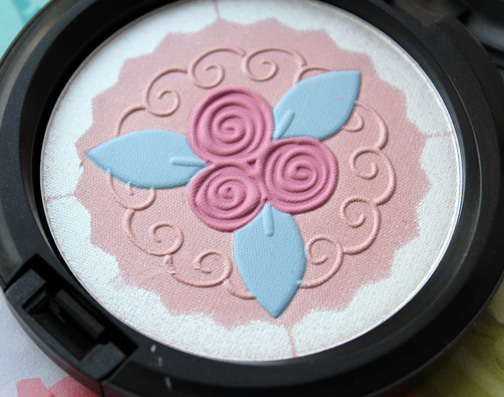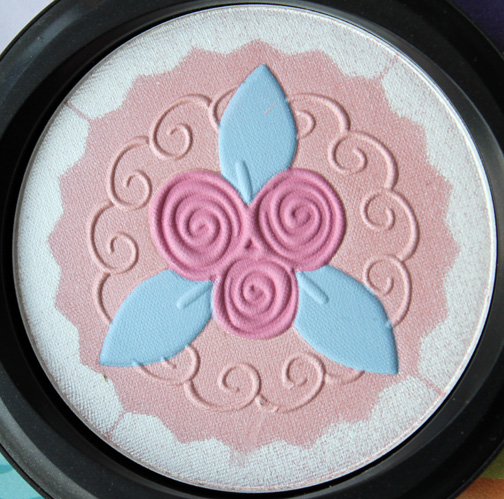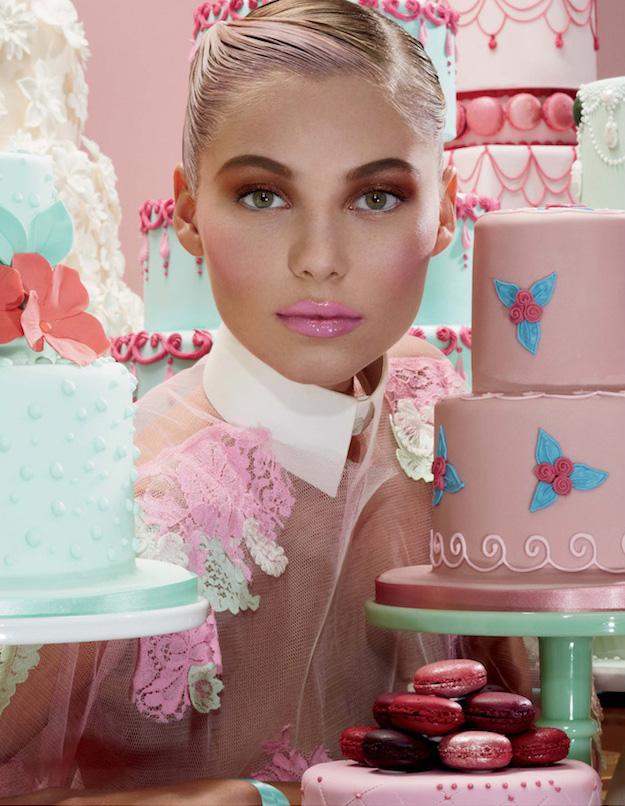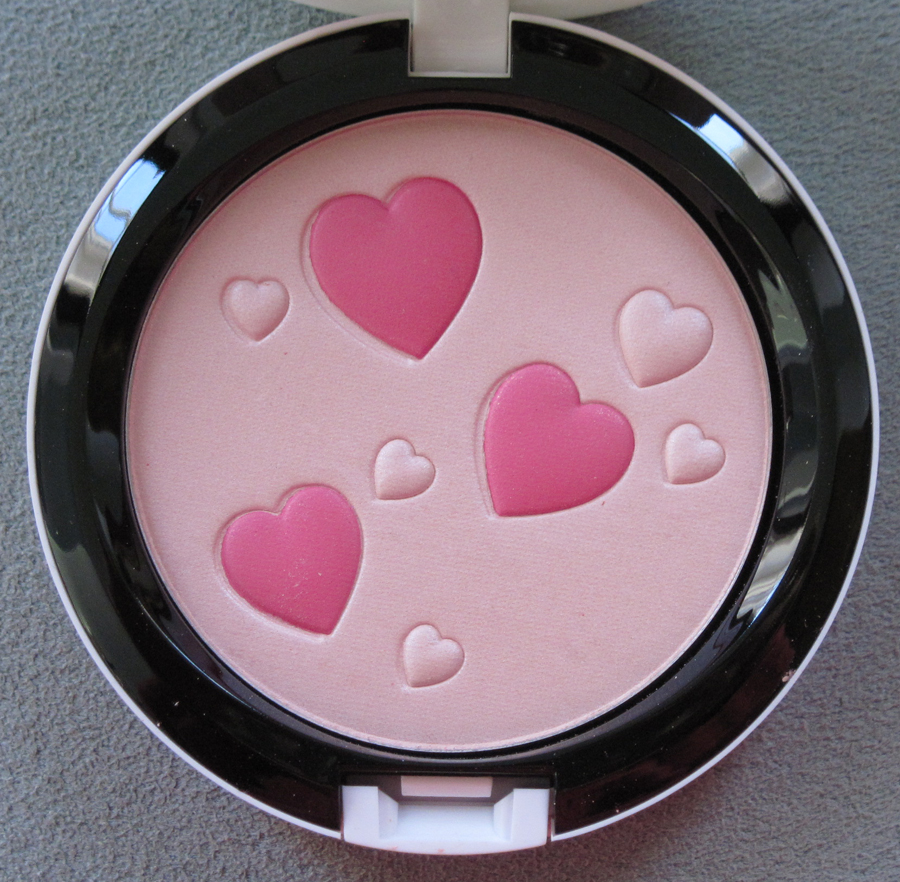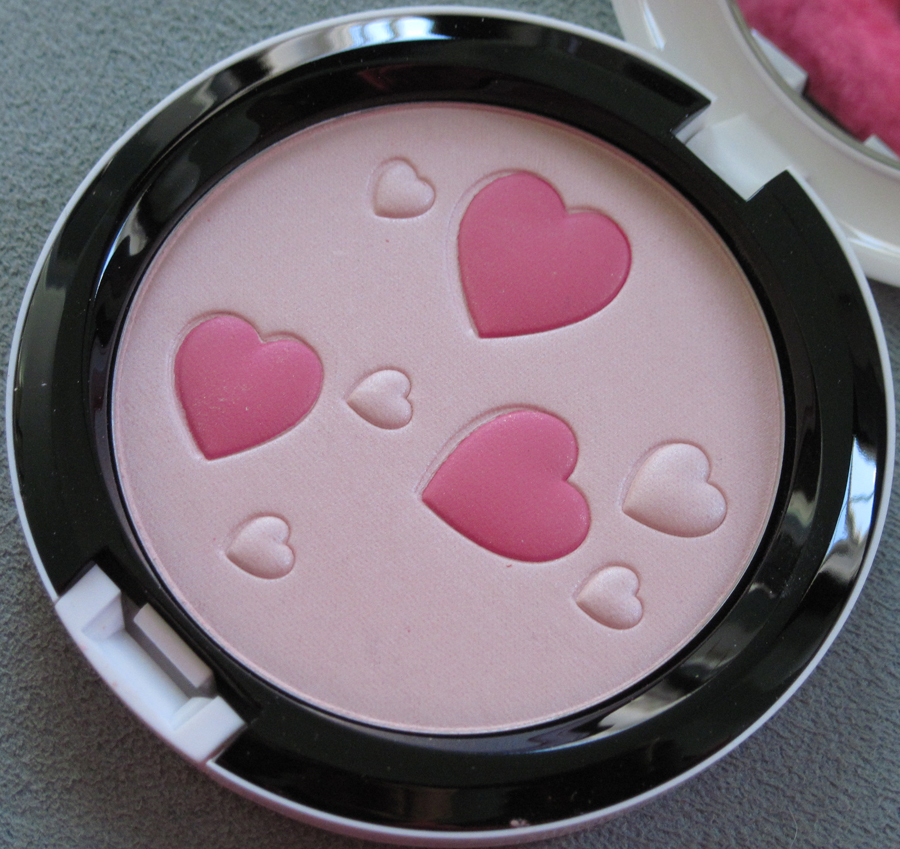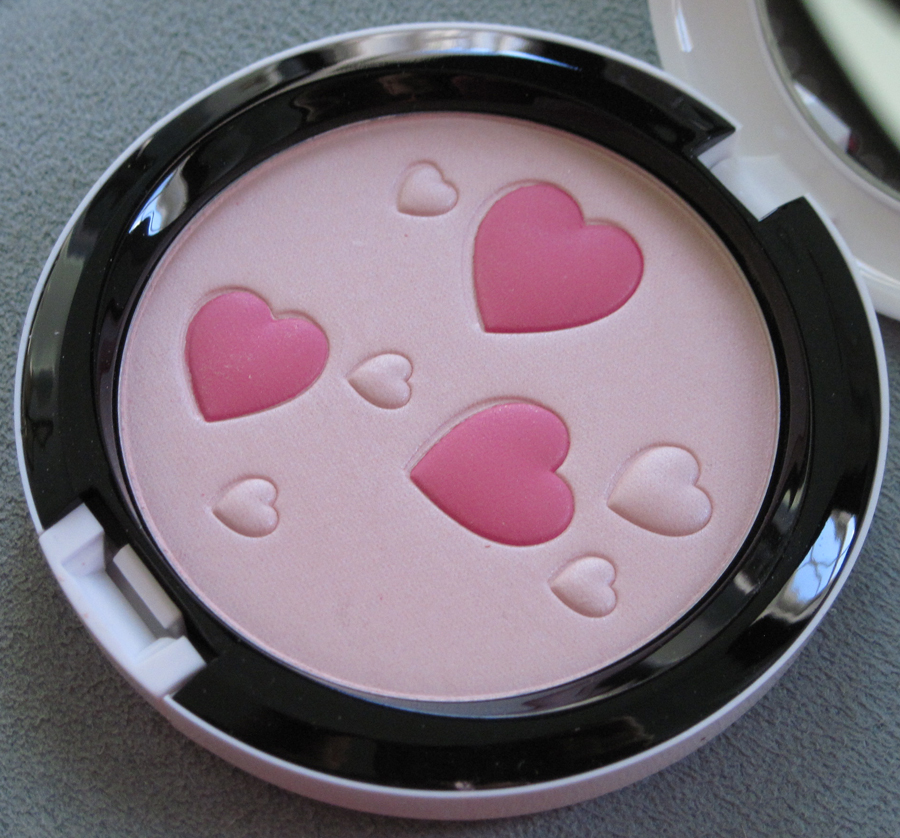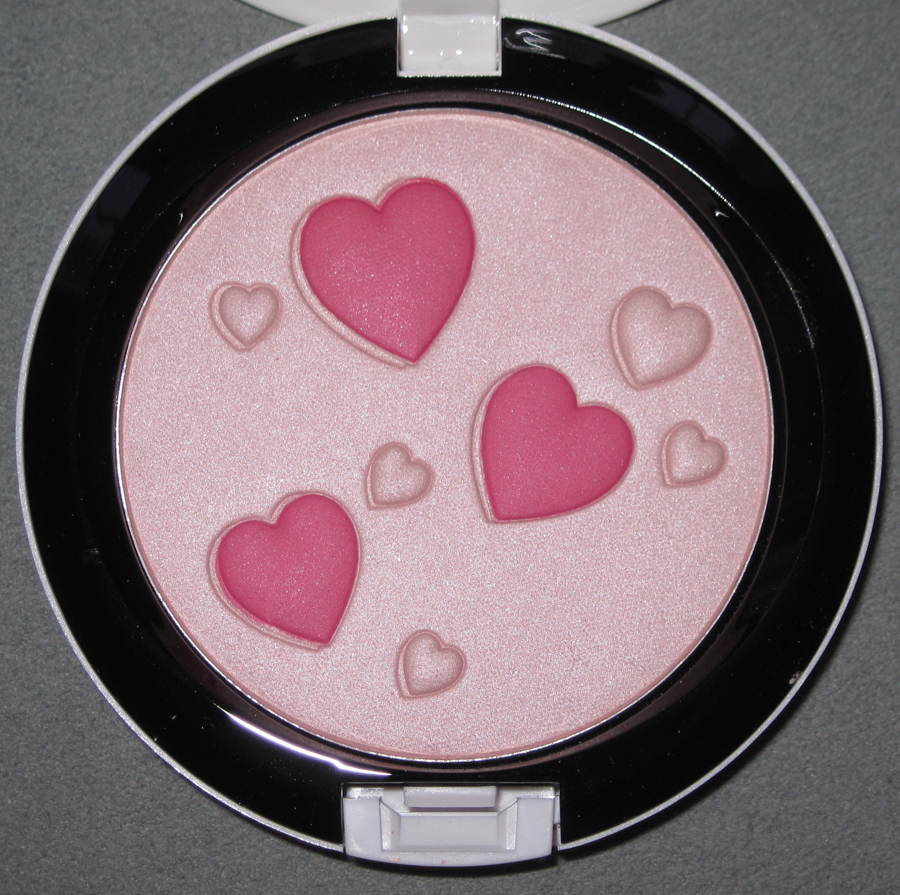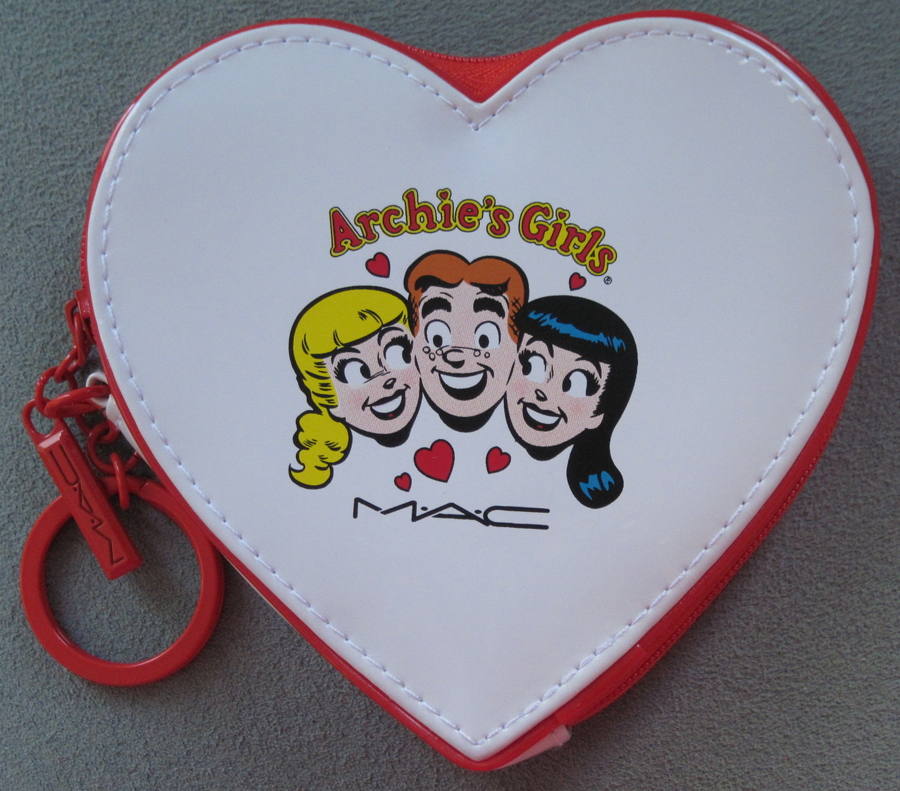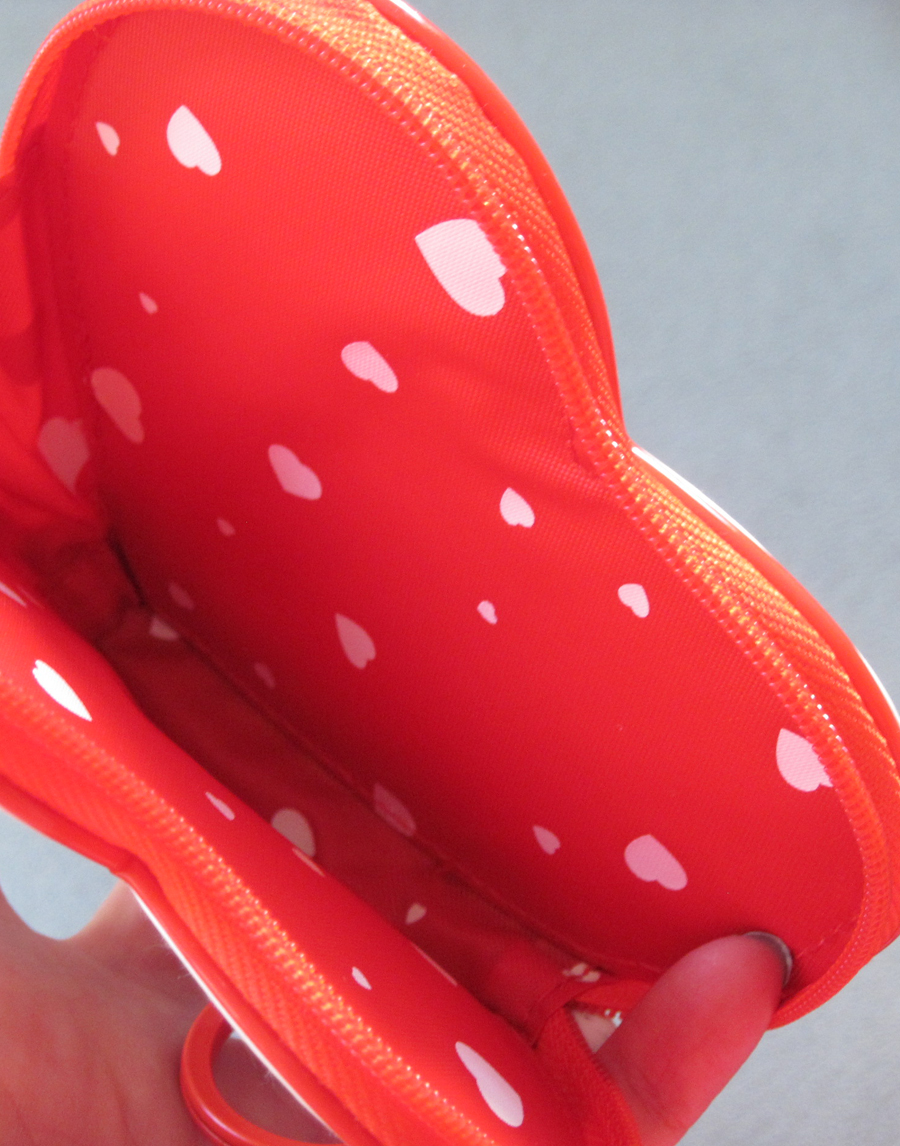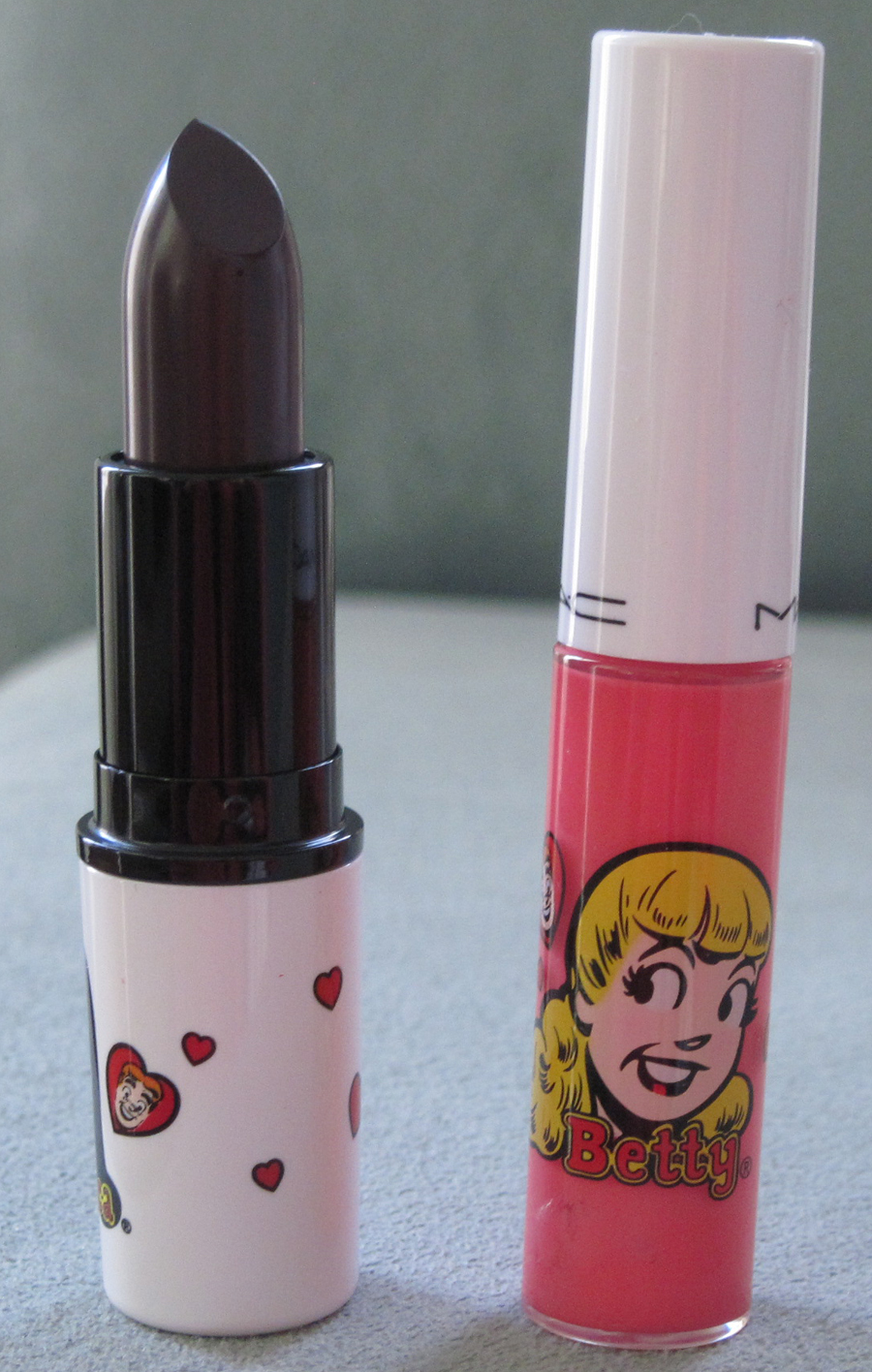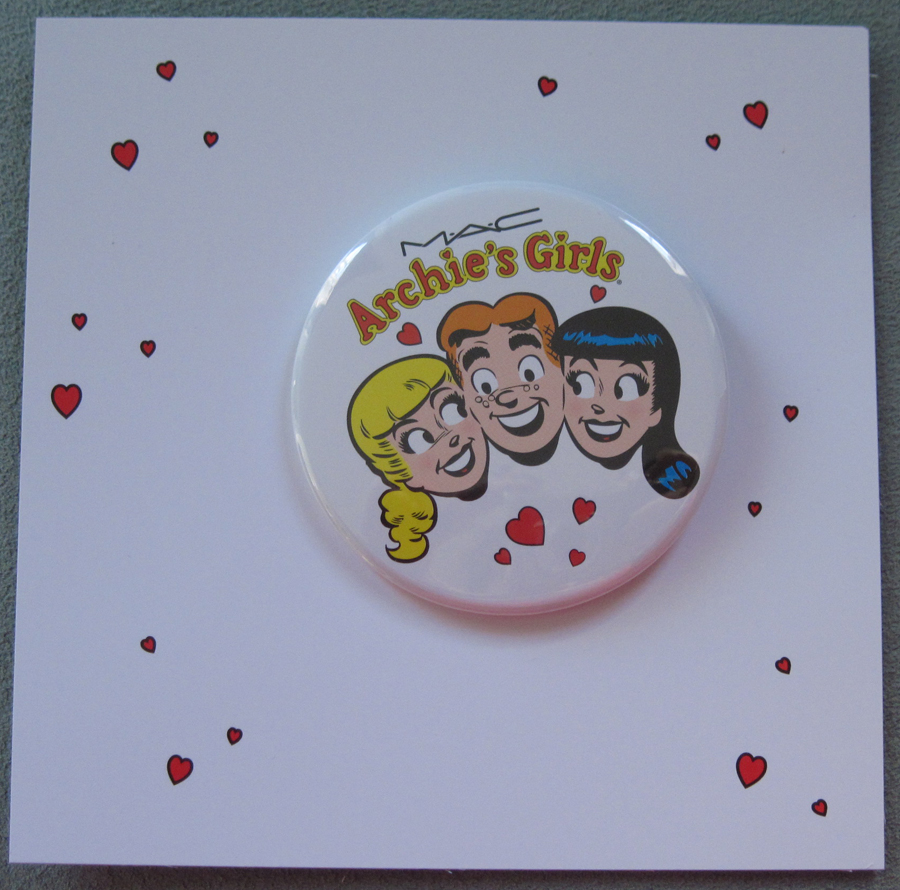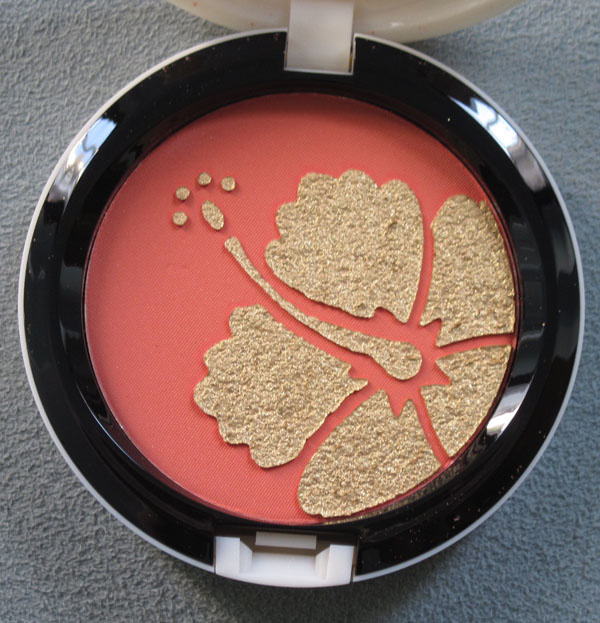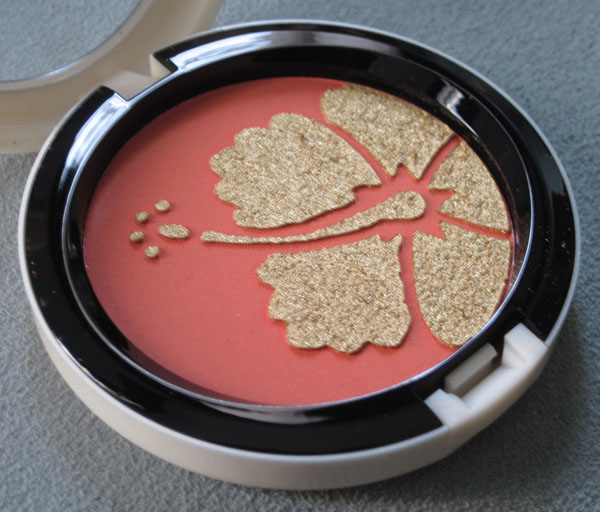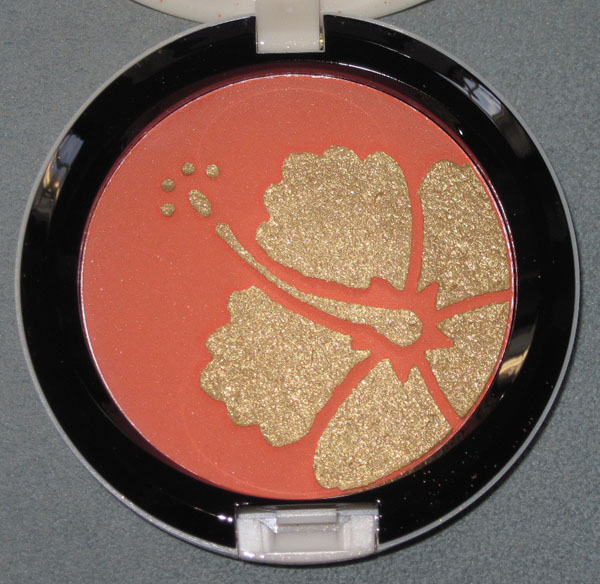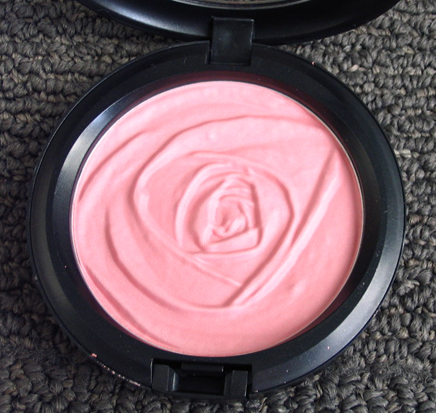Initially I was confused as to why MAC chose troll dolls as a collection theme. Yes, a resurgence of all things ’90s is upon us, but it still seemed strange to resurrect the troll doll fad. It only made sense when I got wind of the new Trolls movie, which releases this November.
Naturally I love how obnoxiously bright the packaging is.
The image on the boxes is the signature crazy troll hair.
I don’t think I’ve ever seen makeup with a troll silhouette imprinted!
Glitter caps!
Now for a little history. The original troll doll was created by a Danish woodcutter named Thomas Dam in 1959. Too poor to afford a Christmas gift for his daughter, he carved her a troll figure out of wood instead. Pretty soon the doll was the talk of the town, and the Dam Things company began producing trolls made of plastic in the early ’60s under the name Good Luck Trolls. In the U.S. the troll doll craze hit peak popularity from 1963-65 and came around again in the ’90s. Being the ’90s buff that I am, I felt the need to do a little more research on the renewed interest in trolls. I found a very useful entry on the topic here – while no longer active, this blog is great for anyone needing a dose of ’90s nostalgia. While regular trolls were popular, there were also dolls known as Treasure Trolls that sported jewels in their bellybuttons, and you would rub the belly gem for good luck. You might remember the billikens I looked at earlier this year – one would rub their bellies for good luck, and one of the compacts I included showed a billiken with a jewel in his navel. So maybe the Treasure Trolls were drawing on this tradition? In any case, I just had to include these early ’90s commercials for the Treasure Trolls.
I was hoping to find more about why trolls experienced such a renaissance in the ’90s. Alas, I didn’t turn up much. This article seems to think it was the general ’90s obsession with anything retro, but that’s about all I found.
Anyway, as a collector I was also curious to see if there were any folks out there who had amazing troll stashes, or even museums. Behold, the Troll Hole Museum in Alliance, Ohio! Run by Sherry Groom, the museum boasts a Guinness World Record collection consisting of over 10,000 troll dolls, figurines and other troll memorabilia. It’s the largest troll collection in the whole world.
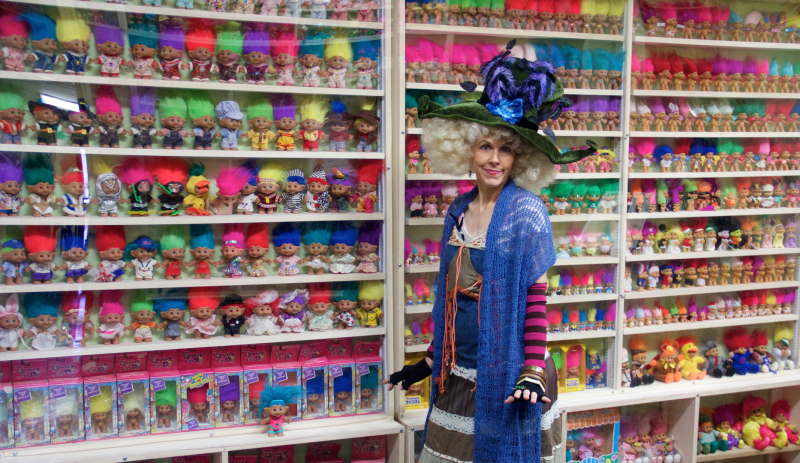 (image from thetrollhole.com)
(image from thetrollhole.com)
And up until recently, there was a Troll Museum in New York City’s Lower East Side. The collection is considerably smaller; however, it was home to possibly the most diverse collection of trolls, including a very rare two-headed troll from the ’60s. Unfortunately proprietor/artist Jen Miller, better known as Reverend Jen, was evicted earlier this summer. Due to health issues she was unable to work and pay the rent. It breaks my heart to think of her collection, so lovingly amassed over 20 years, to be sold or given away. Not only that, since the museum was actually her apartment (tours were given by appointment only) she has nowhere to live now.
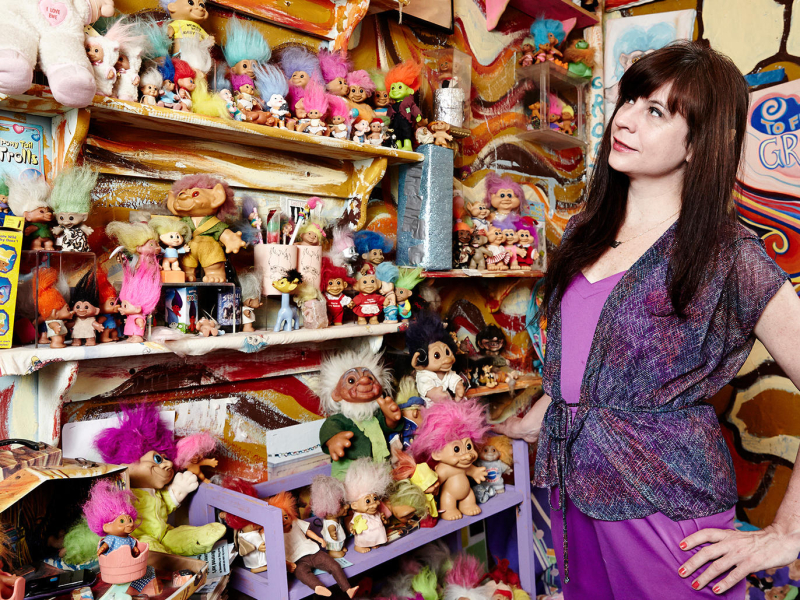 (image from artnet.com)
(image from artnet.com)
While the Troll Hole may be much bigger, I definitely gravitate more towards Reverend Jen’s collection. We seem to be kindred spirits in our approach to having museums in our homes, and also our “Board of Directors” – she clearly has a sense of humor about it the way I do with my museum staff.
I do hope Reverend Jen is able to get back on her feet. If nothing else, I wish I had known she was getting thrown out of her apartment – maybe I could have at least stored part of her collection somewhere until she was able to find another home.
Getting back to MAC, I thought it was well done. If I was going to design a troll doll-themed collection this is what I would have come up with. Yes, it’s a little juvenile but still loads of fun for those of us who remember the troll fad.
What do you think of the collection? And do you own any troll dolls?
Like many longtime Simpsons fans, I was extremely pleased to see this collection from MAC. I've been watching the Simpsons since I was 11 (even titling a previous blog post with a Simpsons quote), and while I've been disappointed in the more recent seasons, those first few were comedy gold. MAC's collection pays homage to Marge Simpson (née Bouvier), the long-suffering and very sweet wife of lovable buffoon Homer Simpson.
I'm amazed at the sheer volume of characters they were able to cram in on the outer packaging. However, I don't see my favorite bit character – can anyone spot Ralph Wiggum? He has to be on there somewhere, I just can't find him.
I picked up Pink Sprinkles blush, Nacho Cheese Explosion lip gloss (couldn't resist a shade in the signature Simpsons yellow!) and Itchy & Scratchy & Sexy lip gloss, along with Marge's Extra Ingredients eye shadow palette and the nail stickers.
While I liked the outer packaging, I was less enthralled with the plastic cases. Something about yellow plastic read very kindergarten to me – the rounded, raised corners of the eye shadow palette in particular made it look like a pencil case my 5 year-old niece would carry. Granted, it's difficult to execute sophisticated packaging for a cartoon-based collection, but it's not impossible (see MAC's sexed up Hello Kitty collection and these Simpsons/Mondrian-inspired wine bottles). It might have been better to do a black background for the plastic cases. I could be totally wrong though, as package design site The Dieline loved the concept.
I'm glad there was also an imprint of Marge's visage on the blush and eye shadows.
I can't bear to use these nail stickers but I'm certainly tempted.
(If you want to see swatches of all products and some great Simpsons quotes, check out this epic post at XO Vain.)
And now, I thought I'd share my top 5 favorite beauty and makeup moments from the Simpsons.
5. From "The Girly Edition", season 9. Bart has just wrapped up a super schmaltzy segment for the children's news show, Kidz Newz.
Lindsey Naegle: "Bart, look up here. This is where the tears would be if I could cry. But I can't. Botched face-lift."
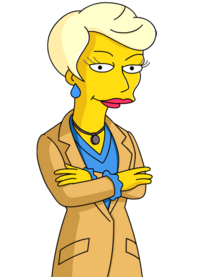
(image from simpsons.wikia.com)
4. From "Homer vs. Patty and Selma", season 6. Marge tells Homer her sisters are there for dinner.
Homer: "Marge, we had a deal. Your sisters don't come here after six and I stop eating your lipstick."
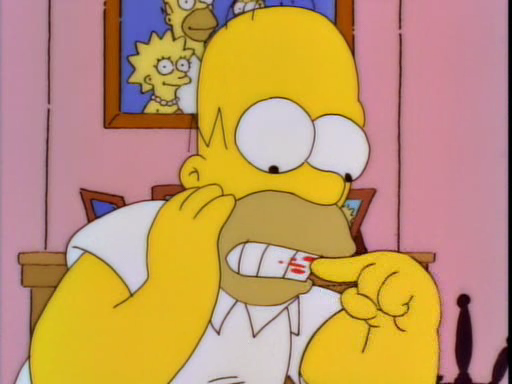
(image from deadhomersociety.com)
3. From "Lisa the Beauty Queen", season 4. Lisa and Marge are getting makeovers at Turn Your Head and Coif, one of Springfield's leading beauty salons.
Lisa, as a stylist breaks out a blowtorch: "Isn't this dangerous?"
Stylist, donning a welder's mask: "Don't worry, I am well protected."
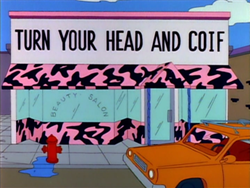
(image from simpsonswiki.com)
2. Same episode as above. Lisa and another contestant are at a rehearsal for the Little Miss Springfield pageant, looking at previous winner Amber Dempsey.
Pageant contestant: "She's about to bring out the big guns…eyelash implants."
Lisa: "I thought those were illegal."
Pageant contestant: "Not in Paraguay."
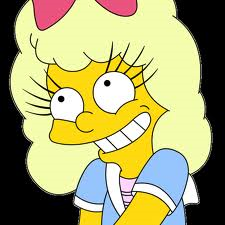
(image from es.simpsons.wikia.com)
1. My all-time favorite beauty moment is, obviously, Homer's makeup gun ("The Wizard of Evergreen Terrace", season 10).
Marge: "Homer, you've got it set on 'whore'!"
Lisa: "Dad, women won't like being shot in the face."
Homer: "Women will like what I tell them to like!"
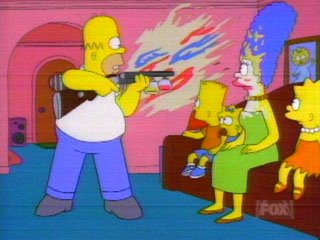
(image from jezebel.com)
What do you think of this collection? Are you a Simpsons fan? Overall, I thought it was nicely done, and the colors were spot-on.
In case you haven’t had your fill of desserts from the Sweet Tooth exhibition, I’m bringing you more sweet treats courtesy of MAC’s Baking Beauties collection. I picked up the two Pearlmatte face powders: In For A Treat and Pink Buttercream, which feature delicate, frosting-like floral designs. And for your viewing pleasure I put them on this positively adorable macaron wrapping paper from Paper Source.
Pink Buttercream:
I also love the promo image with its abundance of beautifully decorated cakes and a plate of macarons – the model is purely secondary to them! Incidentally, I think the green plate on the lower right is the same one I used to hold the Ladurée trio in the Sweet Tooth exhibition.
I can’t look at cake displays without immediately thinking of Wayne Thiebaud’s famous cake paintings, which he painted from memories of his work in restaurants rather than actual displays. Cakes (1963), Cake Window: Seven Cakes(ca. 1970-1976), and Cakes and Pies(1994-1995) are among my favorites.
In my opinion, his work is very appealing because it conveys nostalgia and is completely unpretentious. An article by Cathleen McGuigan for the Smithsonian hits the nail on the head in describing what is so enjoyable about Thiebaud’s cakes, and I think it could be applied to his other subjects as well (lipsticks, hot dogs, gumball machines, just to name a few.) “In a contemporary art world enthralled with such stunts as Damien
Hirst’s diamond-encrusted skull, Thiebaud is wonderfully ungimmicky. He
belongs more to a classical tradition of painting than to the Pop
revolution that first propelled him to national attention in the 1960s.
Then, the sweet everydayness of his cake and pie pictures looked like
cousins of Andy Warhol’s soup cans. But where Warhol was cool and
ironic, Thiebaud was warm and gently comic, playing on a collective
nostalgia just this side of sentimentality. He pushed himself as a
painter—experimenting with brushstrokes, color, composition, light and
shadow. The cylindrical cakes and cones of ice cream owed more to such
masters of the still life as the 18th-century French painter Chardin, or
the 20th-century Italian Giorgio Morandi, as critics have pointed out,
than to the art trends of the time.” That’s all well and good, but was the man just obsessed with desserts and food in general? Of course not. As McGuigan explains, “Over the years Thiebaud has repeatedly tackled the same subjects—not
to perfect a formula but to keep exploring the formal possibilities of
painting. ‘What kinds of varying light can you have in one painting?’ he
asks. ‘Direct glaring light, then fugitive light, then green glow. It’s
a very difficult challenge.’…When Thiebaud paints an object or form, he famously surrounds it
with multiple colors, often stripes or lines, of equal intensity, to
create a halo effect—though you might not notice that unless you look
closely. ‘They’re fighting for position,’ he says of the colors. ‘That’s
what makes them vibrate when you put them next to each other.'” Though some see a loneliness or melancholy in his cake paintings, I choose to perceive them as taking on a “celebratory” tone, as one critic states. Thiebaud himself has denied any sense of sadness in these works. In a PBS interview from 2000, he shares why it was risky for him to make paintings of cakes and pies: “It’s fun and humorous and that’s dangerous in the art world, I think.
It’s a world that takes itself very seriously, and of course, it is a
serious enterprise, but I think also there’s room for wit and humor
because humor gives us, I think, a sense of perspective.”
MAC seems to have the market cornered on cartoon/comics collaborations. In addition to numerous Disney collections, 2011 was the year they released a Wonder Woman-themed collection. This time MAC is back in the comics game with Archie's Girls, which is based on Betty and Veronica, the two girls who vie for Archie's heart.
I picked up one of the Pearlmatte powders.
With flash:
I also purchased the Jingle Jangle Coin Purse – I loved the lining!
In addition to the more general products, MAC offered individual Betty and Veronica collections. I selected one piece from each. On the left is lipstick in Boyfriend Stealer, whose vampy color is representative of Vernoica (according to MAC): "The envy of every girl, Veronica smoulders with a limited-edition colour
collection rich in deep, seductive tones. Lipsticks in violet, red and
blackened plum play up the va-voom while Lipglass shimmers in shades
certain to steal hearts. Nails lacquered in dark berry and navy crème
ready for a soda fountain catfight."
On the right is Kiss and Don't Tell from the Betty collection, which MAC describes thusly: "Beautiful Blonde-Next-Door Betty inspires a limited-edition colour
collection with a soft, innocent sexiness. Lipsticks in peaches and
pinks beam bright under layers of Lipglass in girly shades. Nail Lacquer
in Comic Cute and Pep Pep Pep to win Archie's affection."
Having never read Archie comics I can't say for sure whether MAC's character descriptions and subsequent color choices are accurate and appropriate, but from everything I've read online the shades seem spot-on for each girl.
As with the Wonder Woman and Hey Sailor! collections, the best part for me was the freebie MAC provided with my order. Oh, how I live for collectibles like this!
Overall I thought this was a fun, cute collection, but I probably would have enjoyed it much more if I were actually familiar with the comics.
What do you think? And are you a Betty or Veronica?
Surf’s up! Overall I liked the design for this collection, especially the yellow and grey stripes with a pop of hot pink. (Okay, I love anything yellow and grey, but I do really think it was spot-on for this.) I also liked the white casing – such a refreshing change from MAC’s usual black. The must-have from the collection was My Paradise blush, if only because it has a pretty shimmery hibiscus on it:
With flash:
I have never gone surfing nor will I ever, but if I did, I’d definitely pack this in my makeup bag. (Yes, I would wear makeup to go surfing!)
MAC followed in Prescriptives' footsteps and released its own rose-embossed blushes as part of their Rose Romance collection. While I did enjoy the Prescriptives palettes, I like that MAC sculpted a rose in the powder itself rather than choosing to do a two-dimensional rose overlay like Prescriptives.
